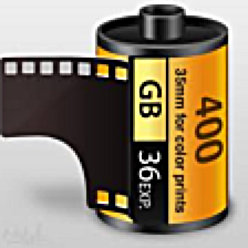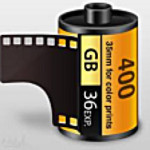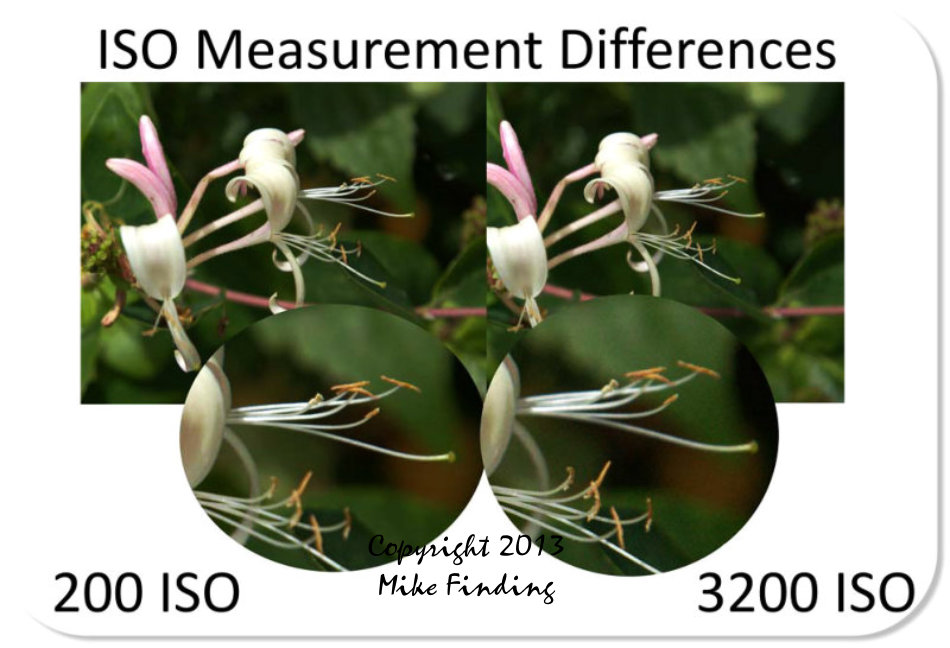What is ISO?
There could be said to be two names for ISO! Just to confuse the issue!
Way back in my early days of film photography the title was ASA. This was a setting that allowed the film to be exposed at the right level with other camera settings being correct.
Now ISO is the name of the “same” setting! We’re really talking about the speed or sensitivity of the image “recording medium”. ASA measured the speed of film and ISO measures the speed of the digital sensor
With film photography ASA was the indication of how sensitive a film was to light. It was measured in numbers and visible on the film packets (see the image to the right of the film roll). The lower the number the lower the sensitivity of the film and the finer the grain in the shots you’re taking.

In the digital medium, ISO measures the sensitivity of the image sensor. The principles remain and the lower the number the less sensitive your camera is to light and the finer the grain or the less “noise” in the image. The high ISO numbers work in a very similar way to ASA in that the higher ISO numbers will be used in lower light conditions. This then allows faster shutter speed for the required image.
What does ISO actually mean? Well, not much! ASA was the name of the American Standards Association and ISO is the name of the International Standards Organization. Both American organisations and they set the standards! NOT something we need to take too much notice of – just the way they work is what we’re interested in!
So what do we look for?
- Light: Is the subject well lit?
- Grain: Do you want a grainy / noisy shot or one without? Can the noise be avoided?
- Tripod: Will a tripod be needed?
- Moving: Subject – Is the subject moving or stationary?
Bear in mind this point – faster / higher the ISO and the more “noisy” or “grainy” the shot is likely to be. Does it matter to your final picture? How important is it to get the shot in lower or better light?
News and show photographers often have to deal with low light – using high ISO is probably a critical thing to do. When doing that it can bring out some interesting results with light – when I used to photograph bands back in the 70s there often resulted some great lighting examples. Unfortunately I can’t prove it as most of my old negatives are now missing!
Experiment and see what happens – these days no film developing costs make that so much easier. Examples where higher ISO would be preferred or required: concert and art or museum gallery, indoor sport and probably indoor work at weddings and parties… Again – experiment and make sure that where you propose to use your camera is permissable!
If you get a chance to take photographs at an event as a “bit of fun” – do it and make the mistakes when it isn’t important to have top images. If you’re invited to a wedding, take a camera and do informal shots at the reception – sometimes these can be better than the official photos.
Lower ISO settings would be used by any photographer requiring little or no “noise” in their images – clean detailed and very sharp. Good lighting or artificial light assistance will help to keep ISO settings low and the resulting images should be of better quality.
The Auto mode with any camera is fine to use while you get used to a camera if you’ve never used one before. The camera will select an ISO number based on conditions it detects.
I’ll add a comparison image below, showing the difference between a shot at 200 ISO and another at 3200 ISO.
The easiest part to see as this will be the plant stamens – see the difference in the resolution.
Most photographers, once they know how the settings work, will use the manual ISO settings. In the first place when new to photography, keep an eye on the aperture and shutter speed settings while you try adjusting ISO settings. You will see a difference. You will see that an ISO of 800+ will allow faster shutter speeds and smaller aperture settings. Practice and see how you get on.
Make sure, as I have said many times before: Read the Instruction Book to find out how to alter settings and just get out and practice – that costs nothing now but your time.
Related terms: Image Noise / Pixellation / Grain – they are all terms for the image distortion at higher ISO – Grain being the term usually associated with film images
Terms and Acronyms – names and other words associated with Digital Photograph. Free Download of my report here




